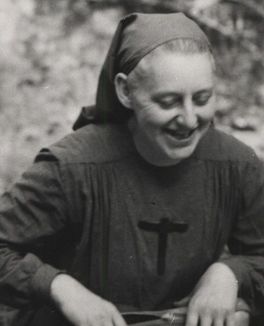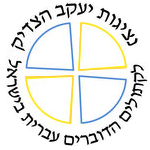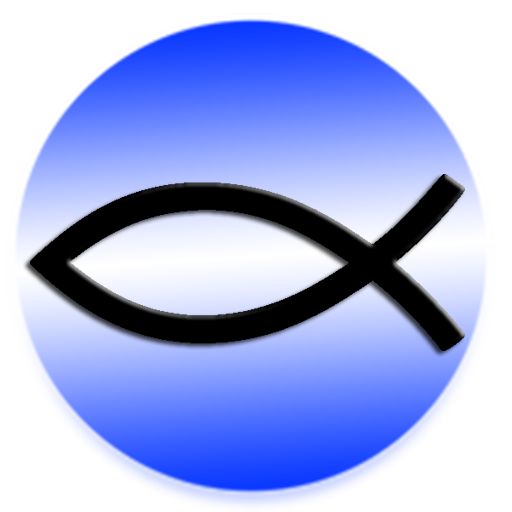Chronology A - 1947-1965
1947
Father Joseph Stiassny (Fathers of Sion) arrives in the country (Mandatory Palestine) and joins the Ratisbonne Monastery.
 Father Stiassny as a young man
Father Stiassny as a young man
1948
The establishment of the State of Israel on May 15. Before and after the establishment of the State, waves of immigration bring hundreds of thousands of Jews from all over the Diaspora. Among these are thousands of Jews who belong to different Christian communities or Jews married to Christians or Jews who define themselves as believers in Jesus.
1950
Little Sister Madeleine (foundress of the Little Sisters of Jesus) enters the country through the Mandelbaum Gate together with two sisters (one of them is Little Sister Aliza) and they open a fraternity on Mamila street in Jerusalem.
 Sister Aliza as a young woman
Sister Aliza as a young woman
1952
Father Jean-Roger Héné (of the Assumptionists) arrives in the country and joins the Notre Dame de Jérusalem community. He will become a tour guide.
 Father Jean-Roger as a young man
Father Jean-Roger as a young man
Father Bruno Hussar (Dominican) arrives in the country and serves as chaplain at the Christian Brothers’ school in Jaffa. He begins to care for a few Hebrew speaking Christians.
 Father Bruno as a young man
Father Bruno as a young man
1953
Little Brother of Jesus Jean Leroy (who would take the name Yohanan Elihai in 1960) together with two other brothers arrive and work on two kibbutzim (Tseelim and Sde Eliyahu).
Brother Yohanan and Father Bruno dream about a “Hebrew church” on the roof of the Brothers’ School.
Brother Yohanan meets Father Joseph Stiassney and the discuss the possibility of a Hebrew liturgy and ask according to what rite it should be celebrated.
1954
Cardinal Tisserant, head of the Congregation for Oriental Churches, says to Father Voillaume (founder of the Little Brothers of Jesus): “The mass in Israel? Not Latin and not Byzantine but rather an Aramaic rite, for example that of the Syrians.” He gives Brother Yohanan permission to use this rite. Yohanan, who is still studying theology in France begins to learn the rite and translate it into Hebrew.
Elias Friedman, a Jewish South African Carmelite monk arrives to join the Carmelites in Haifa.
On December 14, the establishment of the Work of St James (Œuvre Saint Jacques) by Mgr. Vergani, Patriarchal Vicar for Israel of the Latin Patriarch of Jerusalem, together with Father Joseph Stiassney, Father Jean-Roger Héné, Mr. Martin Weinhoben and Ms. Yosha Bergman.
1955
On January 14, the second meeting of the Work of St James during which Father Bruno Hussar, Father Elias Friedman and Father Pierre-Thomas join.
On February 11, a temporary permission (ad experimentum) is given to the Work of St James by Latin Patriarch Gori.
On February 19, at 18.00, a first mass in Latin is celebrated for the Work of St James in Jaffa.
On August 14, a first marriage in the community is celebrated. Father Jean-Roger Héné celebrated the marriage at the monastery of the Poor Clares in Jerusalem.
In October, in Rome, Cardinal Tisserant, head of the Congregation of Oriental Churches, gives an authorization for the first translation of the mass in Aramaic. A first mass, partly in Hebrew, was celebrated in the catacombs of Rome. Brother Yohanan was the celebrant and two Little Sisters (one of them Little Sister Aliza) were present.
1956
On January 31, a meeting took place in Jaffa to plan the inauguration of the center to be opened at 55 Yehuda HaYamit Street. On February 19, a first mass was celebrated there in Latin by Father Bruno Hussar.
On March 21, Brother Yohanan Elihai arrived in Haifa and celebrated the mass according to the Syrian rite in Hebrew. This was the first time that mass was celebrated in Hebrew in Israel. Two Little sisters of Jesus participated, Sister Marie-Paul and Sister Miryam-Elizabeth.
On March 25, Palm Sunday, a celebration was held at Notre Dame in Jerusalem. The representative of the Vatican, Msgr. Odi participated alongside the priests of the Hebrew speaking community (Father Stiassny, Father Bruno and some lay people). There was some Hebrew in the service.
On December 24, Christmas mass was celebrated in Hebrew (according to the Syrian rite) at the home of the Little Sisters of Jesus.
1957
On January 29, an attempt was inaugurated to set up a Christian kibbutz in the spirit of the Hebrew speaking community. Two couples were involved and they lived on a property adjacent to the Sisters of Sion in Ein Karem, Jerusalem.
In February, a report was sent to Cardinal Tisserant. It concluded that the Syrian rite was seen as foreign to many members of the community. The Cardinal referred to the Pope who gave permission to use the Latin rite with some parts of the mass in Hebrew (including the readings).
On March 18, Father Bruno Hussar arrives from Rome with the awaited permission. A first Latin mass is celebrated partly in Hebrew in Haifa in the chapel of Mgr. Vergani, Vicar of the Latin Patriarch in Israel. Brother Yohanan is the main celebrant and the members of the central committee participate. From this point on prayers are in Hebrew and Latin.
 Good Friday in Ein Karem, 1957
Good Friday in Ein Karem, 1957
 Easter 1957 with Brother Yohanan Elihai and Father Stiassny
Easter 1957 with Brother Yohanan Elihai and Father Stiassny
1958
Operation Ezra and Nehemiah to try and convert Christian families who had immigrated to Israel to Judaism.
Father Alfred Delmée arrived and went to Jaffa to replace Father Bruno Hussar.
Father Bruno Hussar begins the preparations to inaugurate a Dominican center for Jewish studies that would become Isaiah House in Jerusalem.
1959
In January, Sophy Grunberg arrives in the Jaffa community.
 Pope John XXIII
Pope John XXIII
On March 27, during the Good Friday prayers in Ein Karem, Yohanan can sing joyfully “Oremus et pro Judaeis" instead of the traditional “Oremus et pro perfidies Judaeis” after John XXIII abolished the term “perfidious” to describe the Jews. The prayer is still in Latin though.
In October, Father Daniel Rufeisen arrives in Haifa.
 Father Daniel picks up a hitchhiker
Father Daniel picks up a hitchhiker
1960
In January, Father Bruno Hussar receives a “secret” permission from Rome to have a Jewish wedding ceremony before the ceremony in the church.
On March 25, the Dominican Center for Jewish Studies at Isaiah House in Jerusalem is inaugurated. Father Bruno Hussar is the director of the center and he is aided by Father Jacques Fontaine. Later Father Marcel Dubois (1962) and Father Gabriel Grossman (1967) would join them.
 Dominicans at Isaiah House, Jerusalem
Dominicans at Isaiah House, Jerusalem
1961
On March 25, appears the first issue of a newsletter called "Gesher" (Bridge). Edited by Brother Yohanan Elihai, it brings together news and opinions that are of interest to Hebrew speaking Catholics in Israel. The newsletter would appear for two years.
In May, Norbert Schwake arrived in Haifa and went from there to the Seminary in Beit Jala to study theology in preparation for ordination to the priesthood in service of the Hebrew speaking communities.
On November 21, Father Alfred Delmée wrote to the bishop to ask permission for himself, Father Daniel Rufeisen, Father Michel Duteuil and Father Jacques Fontaine to pray in Hebrew.
1962
In 1962, the deliberations of the Second Vatican Council began. This Council would change the face of the Church. Among other changes, it would provoke a real revolution in the relations between the Catholic Church and the Jewish people. In addition, the Council would authorize prayer in the local language and encourage the inculturation of Christian faith in the culture in which the Christian lived.
Some priests and monks in Israel send a letter to bishops they know encouraging them to support the positive document about the Jews that was being discussed at the Council.
In April, Elisheva Hemker arrives to study on a kibbutz and then moves to Haifa.
 Central Committee of the community with Bishop Chiappero, 1962
Central Committee of the community with Bishop Chiappero, 1962
On June 12, the legal proceedings introduced by Father Daniel Rufeisen to receive Israeli citizenship under the Law of Return begin. On November 19, the request was refused by a majority of judges of the Supreme Court (with Judge Haim Cohen dissenting from the majority decision).
On December 14, members of the Hebrew speaking Catholic community meet bishops on their way to the Council and discuss with them the importance of the document on the Jews.
1963
On August 5, a first meeting with Protestants in Tel Aviv in order to decide on a common formulation of the Lord’s prayer in Hebrew. Father Alfred Delmée, Brother Yohanan Elihai and Yehoshua Blum (a lay person who would contribute much to the work of translation) participate.
1964
On January 5, Pope Paul VI arrives in Israel. He appoints Hanna Kaldany bishop in Nazareth, Vicar of the Latin Patriarchate.
 Pope Paul VI with Patriarch Gori, Cardinal Tisserant and other dignitaries in Israel
Pope Paul VI with Patriarch Gori, Cardinal Tisserant and other dignitaries in Israel
In July, the first summer camp for the children of the community, run by Elisheva Hemker. In this first camp 19 girls between the ages of 8 and 14 participated. 4 from Tel Aviv, 4 from Beer Sheba and the rest from Haifa. 6 were pupils in government schools and the rest in government schools. The camp was held in a rented house in Nahariya.
On November 2, a first voting in favor of the “Jewish document” at the Council takes place with 2000 for and 200 against. The final vote would be held on October 15, 1965. The final document would formulate the Church’s position on relations not only with the Jewish people but with the religions of the world. The fourth paragraph, the longest in a document that was titled Nostra aetate (Our times), dealt with the Jews and Judaism.
1965
On January 18, a first meeting of Jews and Christians took place in Tel Aviv, initiated by Clothilde Mathys from the community in Jaffa. She works with Father Bruno Hussar, Mr. Joseph Emmanuel, Father Marcel Dubois and Father Alfred Delmée.
On April 15, Holy Thursday, a concelebrated mass in Hebrew is held in Ein Karem. Bishop Hanna Kaldany, the Patriarchal Vicar for Israel participates.
On June 24, Norbert Schwake is ordained to the priesthood in Munster, Germany, for the Hebrew speaking community in Jerusalem.
In July-August, the second month long summer camp for children was held in Moshav Megadim. This time 22 girls and one boy participated (3 from Tel Aviv, 5 from Beer Sheba and 15 from Haifa).
On August 13, Brother Eliyahu Petel is ordained a priest in Ein Karem by Bishop Hanna Kaldany. This is the first ordination in Hebrew.
 Brother Eliyahu Petel on the day of his ordination to the priesthood
Brother Eliyahu Petel on the day of his ordination to the priesthood
Rina Geftman arrives in Israel.













 Chronology E - 2015-2019
Chronology E - 2015-2019